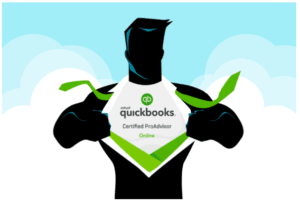
Just connect your accounting software, generate your Founderpath Score, and have funds wired to your account in as little as 24 hours. That said, we strongly recommend that you go with the accrual-basis method for tax compliance and accuracy. If your company meets all three criteria, it’s seen as a SaaS company and you need to comply with all SaaS-specific accounting regulations. To learn about these regulations in more depth than we’ll be going into here, check out FASB’s summary of ASC 606. In our experience, most implementation services (e.g. configuration, installation, testing) usually could be performed by a third party that is not the SaaS provider.
Unlike traditional businesses with tangible products, your revenue streams are a perpetual waltz of subscriptions, renewals, and intricate billing cycles. It’s beautiful, but it also means your accounting needs a special kind of groove — enter the world of SaaS accounting. Unbilled Accounts Receivable (AR) refers to revenue recognized but not yet invoiced to the customers.
SaaS accounting 101: Methods, strategies and KPIs that businesses can use
With our detailed example here, learn how to calculate SaaS bookings, billings, and MRR. And while we are talking about exploring the basics and moving deeper, here’s an extensive list of resources useful for SaaS finance teams. Adhering to them ensures consistency, transparency, and comparability of financial information among SaaS companies and facilitates regulatory compliance.
- However, companies should consider the financial reporting implications as well as broader tax and IT considerations as a result of the new accounting guidance.
- Financial reporting and metrics are like the compass and map for your SaaS business.
- If a SaaS has high bookings but lower billings, it is a leading indicator of future cash flow problems.
- SaaS companies often have significant deferred revenue (an obligation to provide future services) listed as a liability; software development costs or capitalized sales and marketing expenses are featured as assets.
- We believe that it’s our team’s job to help save our CEOs time and take care of the basic bookkeeping tasks that other services dump onto their clients.
- This recognition is the case regardless of when the client pays the SaaS company, so even if the client pays upfront or quarterly, the revenue is recognized the same.
But they also love all of the metrics that are generated by subscription businesses as they grow. Of course, the best founders also embrace these metrics to help them build a best-in-class company. The KPIs below are some that our accounting team has been asked to produce during VC due diligence. The biggest issue we see with clients that come to Kruze from another bookkeeper is serious mistakes with revenue recognition and deferred revenue – especially from “bot” bookkeepers and from non-SaaS accountants. Because of the way revenue transactions recur in a subscription business, small errors can become big problems if not caught early – including having to restate the balance sheet and income statement. The price of incorrectly accounting for revenue and deferred revenue can be high.
Understanding SaaS Accounting
That’s why we price our bookkeeping services on a set, recurring monthly level – our clients can know what their basic accounting will cost each and every month. This helps them manage their cashflow, plus it gives our founders less mental overhead when they think about their upcoming expenses. The gross margin/gross profit in a subscription business matters because this is the amount of customer dollars that will be available to service saas accounting rules and cover the other operations of the business, like sales and marketing or R&D. Deferred revenue is even more complicated since it’s not as easy of a financial figure to understand. At its most basic level, if your clients are paying ahead of time for services, your company will put a deferred revenue liability onto the balance sheet. And as you deliver this service and recognized revenue, the deferred revenue liability decreases.
- To begin with, every startup should have a financial model that includes revenue and expense projections, along with a net cash position.
- A CCA can facilitate implementation of accounting changes and create significant efficiencies.
- However, SaaS companies’ challenges are unique and need a different accounting approach.
- In the SaaS world, these financial statements take on nuanced complexities due to the recurring revenue model, deferred revenues, and the capitalization of certain expenses.
- MRR measures the predictable and recurring revenue generated from subscriptions every month.
- But does SaaS make sense for a small business, or should you look for software you can download for a one-time fee like they did in the old days?
- As a startup, you have to focus on your product and customers, and Kruze takes care of everything else (which is a massive sigh of relief).
Subscription companies often get paid ahead of time for a service that will be delivered over the course of a year. We see many inexperienced bookkeepers recognize the full cash payment upfront as revenue instead of recognizing it over time. This can cause significant misstatement of ARR, and can not only make a founder incorrectly run their business, but can damage a VC fundraise. The ASC 606 revenue recognition standard generally requires an entity to recognize revenue for license renewals no earlier than the beginning of the renewal period. Additionally, a modification of a term license of intellectual property (IP) may include an extension to the original license’s term with the purchase of additional rights. Further, a modification of a term license of software may include the ability to revoke the licensing right and convert to a hosted solution.
